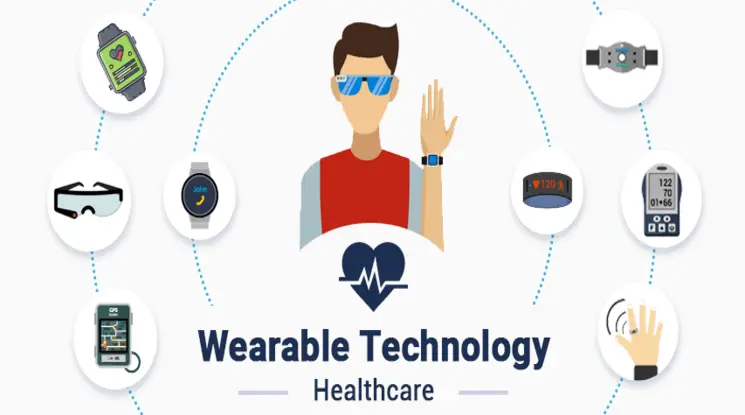In the fast-paced and ever-evolving landscape of the 21st century, technology has become an integral part of our daily lives, influencing and shaping various aspects, including our health and well-being. From wearable fitness technology to health apps, virtual reality (VR), and the pervasive reach of social media, the intersection of technology and health is forging new paths for individuals seeking to enhance their fitness levels and overall well-being.
Rise of Wearable Fitness Tech for Personalized Wellness
Wearable fitness technology has emerged as a game-changer in the realm of personal health tracking. These sleek devices, often worn as wristbands or smartwatches, seamlessly integrate into our lifestyles, providing real-time data and insights into our physical activities. Whether it’s counting steps, monitoring heart rate, or tracking sleep patterns, these gadgets empower users to take charge of their health like never before.
How Wearable Fitness Tech Inspires Proactive Health Management
One notable impact of wearable fitness technology is its ability to foster a proactive approach to health management. By offering instant feedback on activities and encouraging users to meet daily fitness goals, these devices motivate individuals to adopt healthier habits. The mere act of monitoring progress can serve as a powerful catalyst for positive lifestyle changes, transforming exercise from a chore into a gratifying journey towards improved health.
Health apps, another facet of the technological revolution in healthcare, play a pivotal role in promoting fitness. With a myriad of options available, these apps cater to diverse needs, from personalized workout plans to nutritional guidance. The user-friendly interfaces of these applications make health management accessible to individuals of all fitness levels, demystifying complex routines and making them more attainable.
Power of Personalized Health Apps
The effectiveness of health apps lies in their ability to customize fitness regimens according to individual preferences and goals. Whether someone is aiming to lose weight, build muscle, or simply improve overall well-being, these apps offer tailored solutions, often accompanied by progress trackers and reminders. The convenience of having a personal fitness coach in the palm of one’s hand has revolutionized the way people approach their health and fitness journeys.
Virtual reality (VR) has also stepped into the arena of fitness and rehabilitation, opening up new possibilities for engaging and immersive experiences. VR technology transports users to virtual environments where they can participate in simulated workouts or rehabilitation exercises. This not only adds an element of entertainment but also enhances motivation by turning routine activities into enjoyable experiences.
In the realm of fitness, VR is not just limited to at-home workouts. Fitness centers and rehabilitation facilities are increasingly incorporating VR into their programs to make exercise more engaging and dynamic. From virtual cycling to interactive fitness games, VR is breaking down the barriers of traditional exercise, making it more appealing to a wider audience. Moreover, VR has proven to be an effective tool in rehabilitation programs. Patients recovering from injuries or surgeries can engage in virtual exercises that mimic real-world movements, aiding in the recovery process. The immersive nature of VR distracts individuals from the monotony of rehabilitation, making the journey to recovery more tolerable and engaging.
While wearable tech, health apps, and VR address the individual aspect of health and fitness, social media has emerged as a powerful force influencing broader trends in this space. Platforms like Instagram, Twitter, and TikTok have become virtual hubs for fitness enthusiasts, trainers, and health influencers, creating a global community connected by a shared commitment to well-being.
Impact of Social Media on Health and Fitness Trends
Social media’s influence on health and fitness trends is palpable, with users sharing their fitness journeys, workout routines, and healthy recipes. The sense of community fostered by these platforms provides individuals with a support system, encouraging them to stay committed to their health goals. The trendsetting nature of social media also introduces users to new and innovative fitness practices, fostering a culture of continuous improvement and exploration.
However, it is crucial to approach social media with a discerning eye, as not all information shared is scientifically sound. Misinformation and unrealistic expectations can sometimes overshadow the positive aspects of these platforms. Users must navigate the digital landscape wisely, seeking guidance from credible sources and focusing on sustainable health practices rather than short-term trends.
Conclusion
In conclusion, the integration of technology into the realms of health and fitness has ushered in a new era of personal well-being. Wearable fitness technology empowers individuals with real-time data, health apps offer personalized guidance, VR provides immersive workout experiences, and social media fosters a sense of community. As we embrace these technological advancements, it is essential to strike a balance between innovation and a mindful, evidence-based approach to ensure a healthier and more connected future.










